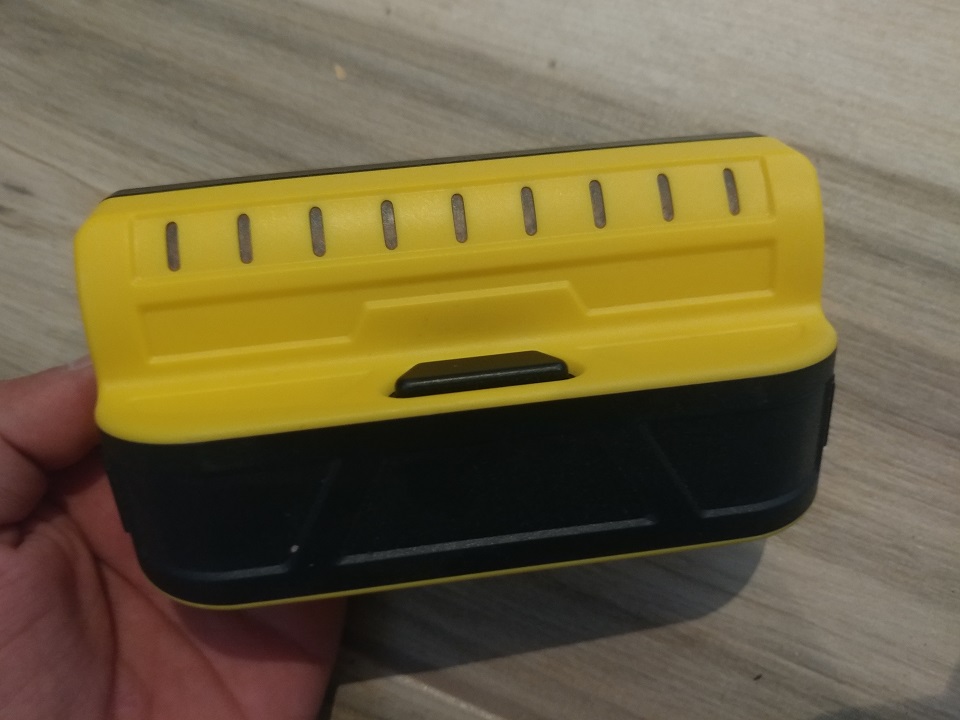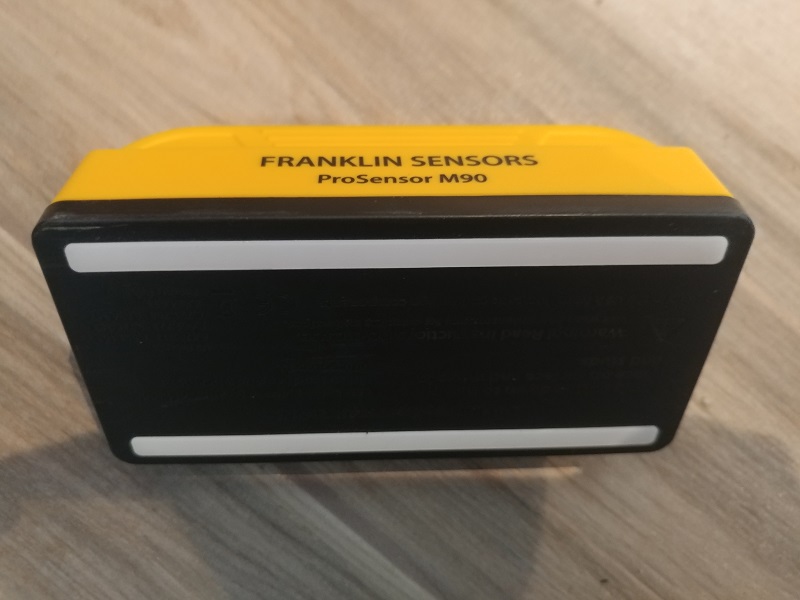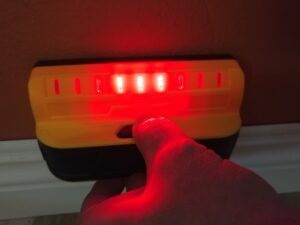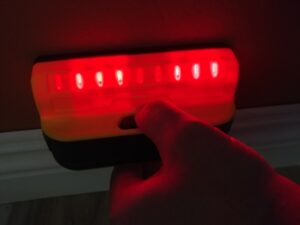Franklin Sensors since their debut several years ago has come out with several models since. Recently I got my hands on one of their newer models, the ProSensor M90 and in this article I will be reviewing it. As a disclosure, this was not provided by the Manufacturer and neither have they contacted me. They are completely unaware that Tool Craze is doing a review on one of their products and as such I am not obligated to give a positive review or be swayed in any way. As with all my reviews, this review will be unbiased and fair.
What’s different about Franklin Sensors is that they operate differently than your ordinary stud finders. Unlike an ordinary studfinder that requires the user to place on the wall over an empty spot on the wall for a few seconds to calibrate, the Franklin Sensors don’t need calibration before use. You also don’t need to place them on the wall to start looking for studs as you can press the button and hold away from the wall and they’ll work just fine as you place them over a wall. The next main feature that sets them apart is that they don’t just alert you when you’re over a stud so you can mark the edges, they have a wide body design with multiple lights and the lights that are over the stud are the ones that light up. Also, as you slide the sensor across the wall the lights move to show the studs current position. When the first Franklin sensor came out they were priced at $50 which made them a bit pricier than typical stud finders but several years later, they’ve come down in price and the ProSensor M90 model is priced around $24-30 and with a recent flooring project, I figured I’d give them a try.
Manufacturer Specs:
- Quick and Easy
- Instantly Finds Studs – No Calibration Required
- Displays Stud Center and Edges Simultaneously. Detects Wood and Metal
- Accurate – Over 1 inch in detection depth
I was able to try out the Franklin Sensors ProSensor M90 model when I was installing trim and it works just as advertised, it requires no calibration and it doesn’t matter if you press the scan button on the wall or away from the wall, it just works and works the same either way. The M90 model has 9 LED lights on it’s panel for wide scanning and three of them light up when you’re over a stud.
The Prosensor M90 model is only a stud finder and what I mean by that is that it only detects studs or any object directly behind a wall and will not alert you if there’s any electrical wiring behind the wall. So if you need to check for live electrical wires, you’ll need another stud finder with that ability.
The ProSensor M90 model also doesn’t have any audible alert system, which means it wont beep when you’ve found a stud and this is fine and dandy since the LED lights is all you need to know you’ve found a stud. It also uses two AAA batteries which was a nice feature as you can buy AAA batteries in bulk and save money compared to 9 volt cells and not to mention AAA batteries are easier to find.
As far as performance goes, the M90 works as advertised and makes finding studs much faster and easier than regular stud finders and this is mainly due to the fact that you don’t need to calibrate and you know with visual confirmation where a stud is. I also noticed that the back of the M90 has two wide strips of plastic material that makes sliding across the wall very easy and doesn’t appear to mar or mark the walls. I preferred this over felt pads on typical stud finders which have a bad habit of gripping to the wall making sliding difficult at times.
All is not perfect with the Franklin Sensors ProSensor M90 model. While it did do a great job of finding studs, it at times gave false readings and sometimes would get glitchy. Sometimes I would slide across the wall and find a stud with 3 lights lighting up and then the stud would get larger with six or seven lights lighting up and then disappear at moments notice. Sometimes you would think it found a stud only to put a nail down and find out nothing was behind the wall. Some times one stud would split into two according to the sensor. Those were the results I got in the above video when I tested it out in one room. Upon going to a different room I got much better results there with nearly perfect accuracy so it depends on the wall conditions such as if there’s texture on the wall or other inconsistencies.
Conclusion:
I was hoping it would be more accurate than typical stud finders but I find it’s about as accurate as regular stud finders so in that sense it’s good that it’s not worse than the competition. However when it comes down to ease of use and how much faster it is to use than regular stud finders is where the Franklin Sensors shine. No longer do I need to find both edges of a stud and hassle with calibration as the Franklin Sensors just works without all the fuss of an ordinary stud finder. I do wish they were more accurate however they’re as good or bad at stud detection as the competition but much easier and faster to use and because of that I’ll stick to using the Franklin Sensors ProSensor M90 model over traditional stud finders. At least until I can find something with much higher accuracy. In short I recommend them for simplicity of ease of use and how much faster they get the job done over traditional stud finders. I don’t recommend them if you’re looking for something with a great degree of accuracy.
![]()
Free 2 day shipping – Try Amazon Prime 30-Day Free Trial
DISCLOSURE:
Tool Craze does not sell this product or any product on the Tool Craze website. Tool Craze does not handle the sale of any item in any way. If you purchase something through a post on the Tool Craze site, Tool Craze may get a small share of the sale. Please refer to the About section for more info.





Leave a Comment